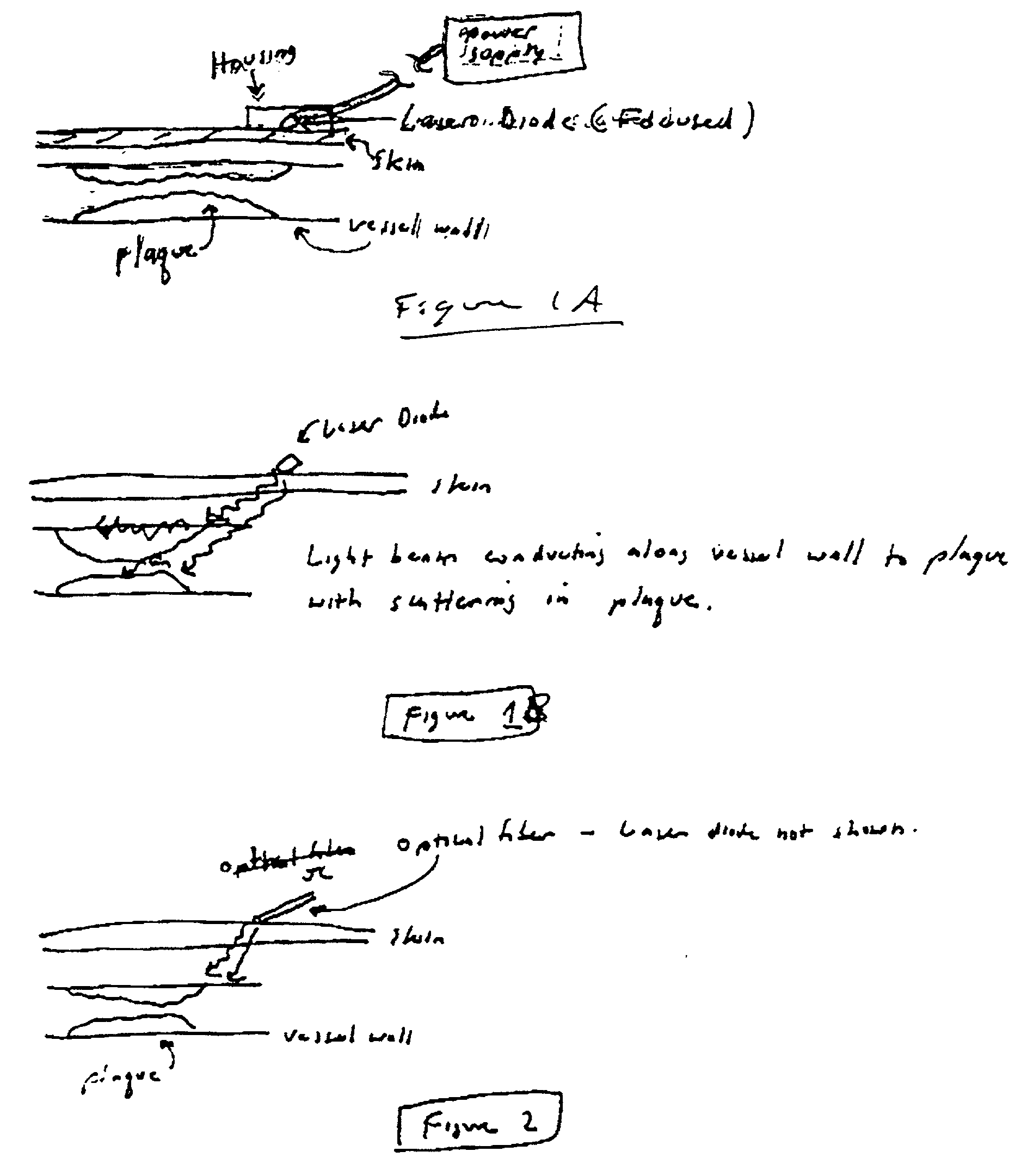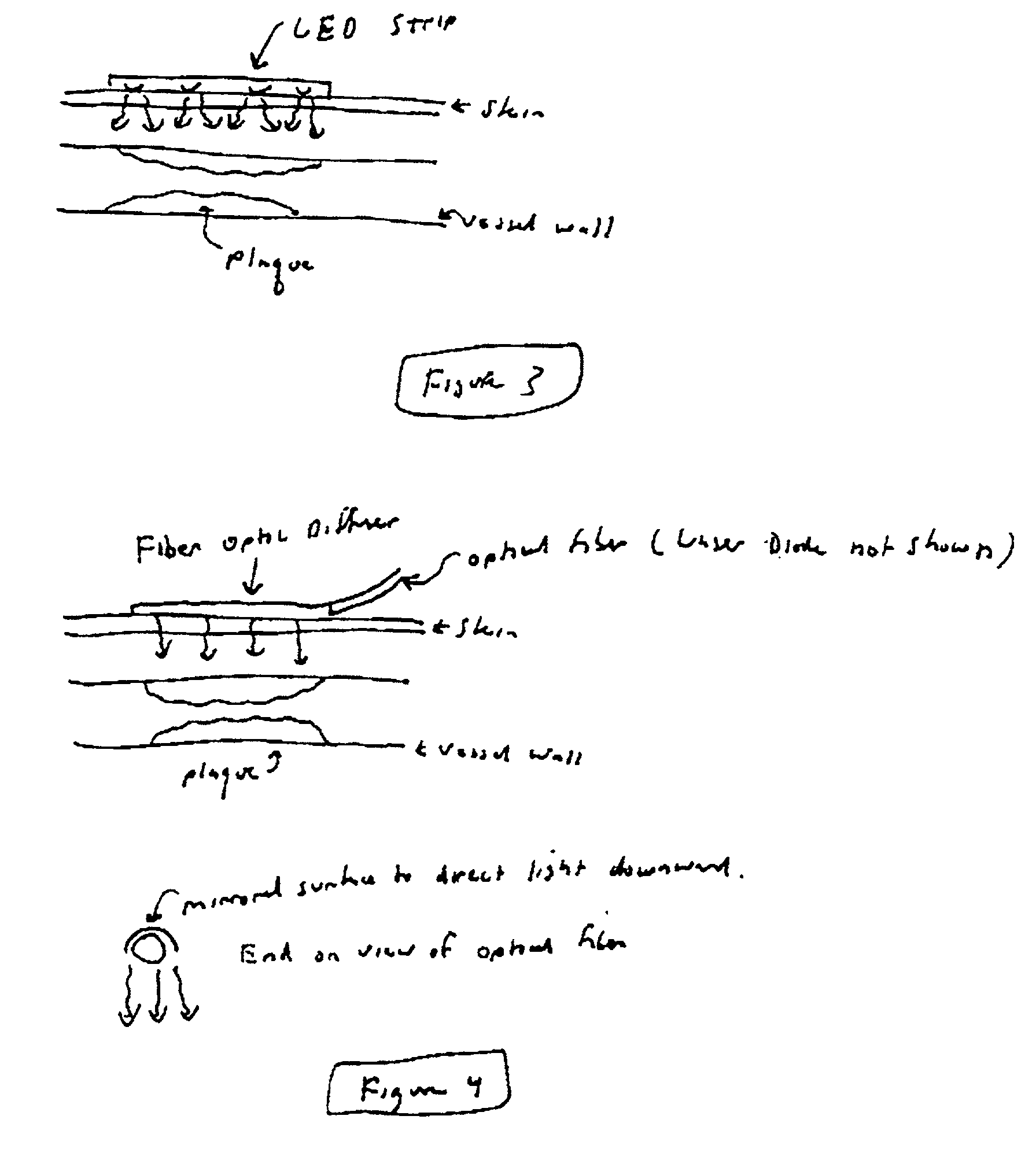Noninvasive vascular therapy
a vascular therapy and non-invasive technology, applied in the field of medicine and pharmacotherapy, can solve the problems of increased total risk, optical fiber, puncture of arterial vessels, etc., and achieve the effect of minimal side effects and maximum cytotoxicity
- Summary
- Abstract
- Description
- Claims
- Application Information
AI Technical Summary
Benefits of technology
Problems solved by technology
Method used
Image
Examples
example 1
Transcutaneous Photodynamic Therapy of Vascular Lesions
[0069] Occlusive peripheral vascular disease, restenosis and other vascular lesions may be effectively treated by transcutaneous photodynamic therapy. Restenosis, the formation of a thick neointima due to the accumulation of proliferative smooth muscle cells and extracellular matrix at an injured site, is a frequent complication of surgical and percutaneous interventions for occlusive peripheral vascular disease. Restenosis occurs as a result of the natural reparative process and is proportional to the degree of injury inflicted upon the arterial wall. The current therapies include surgery, administration of anticoagulants such as Heparin.RTM., vasoconstrictors such as Angiotensin II.RTM., antiproliferative agents such as Angiopeptin.RTM., Maphthopyran and Mycophenotate mofetil.
[0070] Since Heparin.RTM. has a high-binding capacity to basic fibroblast growth factor and is also a potent antiproliferative agent and Angiotensin II.R...
PUM
| Property | Measurement | Unit |
|---|---|---|
| Force | aaaaa | aaaaa |
| Force | aaaaa | aaaaa |
| Force | aaaaa | aaaaa |
Abstract
Description
Claims
Application Information
 Login to View More
Login to View More - R&D
- Intellectual Property
- Life Sciences
- Materials
- Tech Scout
- Unparalleled Data Quality
- Higher Quality Content
- 60% Fewer Hallucinations
Browse by: Latest US Patents, China's latest patents, Technical Efficacy Thesaurus, Application Domain, Technology Topic, Popular Technical Reports.
© 2025 PatSnap. All rights reserved.Legal|Privacy policy|Modern Slavery Act Transparency Statement|Sitemap|About US| Contact US: help@patsnap.com


